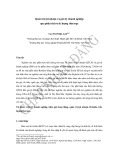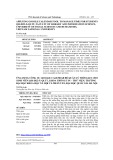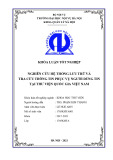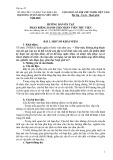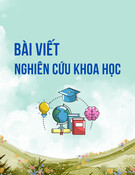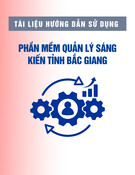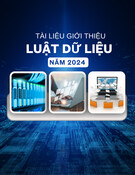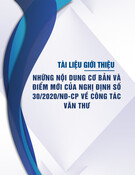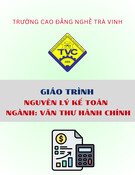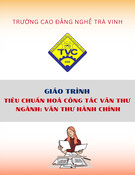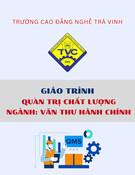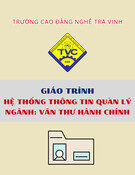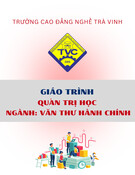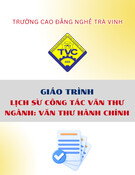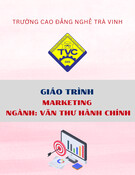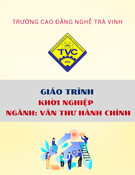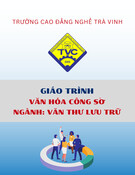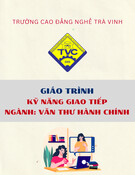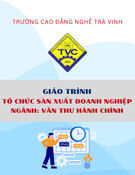
T
ẠP CHÍ KHOA HỌC
TRƯ
ỜNG ĐẠI HỌC SƯ PHẠM TP HỒ CHÍ MINH
Tập 21, Số 9 (2024): 1713-1723
HO CHI MINH CITY UNIVERSITY OF EDUCATION
JOURNAL OF SCIENCE
Vol. 21, No. 9 (2024): 1713-1723
ISSN:
2734-9918
Websit
e: https://journal.hcmue.edu.vn https://doi.org/10.54607/hcmue.js.21.9.3965(2024)
1713
Research Article1
CRITERIA OF DIGITAL BOOK DEVELOPMENT
FOR PRIMARY STUDENTS IN VIETNAM
Nguyen Tan Thanh Truc
Faculty of Library and Information Science, University of Social sciences and Humanities,
Vietnam National University Ho Chi Minh City, Vietnam
Corresponding author: Nguyen Tan Thanh Truc – Email: trucntt@gmail.com
Received: October 03, 2023; Revised: July 12, 2024; Accepted: September 30, 2024
ABSTRACT
The study aims to suggest new criteria for quality digital books as a guide for publishing and
selecting eBooks for primary students. The study uses qualitative research methods to analyze the
current different sets of criteria for children’s ebooks from a variety of theories and the currently
published ebook platforms. The study develops a new framework of standards of digital book
collection supporting primary students’ reading literacy. The study helps the selection and publishing
of quality ebooks to prepare the digital reading resources to meet the needs of primary education in
the digital transformation.
Keywords: ebooks; publishing criteria; primary students; selecting criteria; Vietnam
1. Introduction
In a world where the boundaries between the real and virtual realms are blurred, the
concept of literacy “has been updated, interacting across a range of platforms, from
traditional to digital social networks” (UNESCO, 2004). With the ongoing digital
transformation impacting both libraries and education (MOET, 2022), information resources
must adapt to this transliteracy environment. As Vietnamese primary schools transition from
traditional models, they face challenges in preparing their digital collections to align with
this digital shift. The success of this transition depends on understanding the roles of e-
books, ensuring accessibility to e-resources, and developing effective digital collections that
help primary students improve their literacy skills. This paper analyzes the benefits of digital
books, the availability of e-books for primary students, and the current criteria used in
publishing and selecting digital books. It also recommends establishing more comprehensive
criteria for developing digital books that support primary students.
Cite this article as: Nguyen Tan Thanh Truc (2024). Criteria of digital book development for primary students
in Vietnam. Ho Chi Minh City University of Education Journal of Science, 21(9), 1713-1723.

HCMUE Journal of Science
Nguyen Tan Thanh Truc
1714
2. Methodology
2.1. Conceptual framework
This research aims to identify a set of criteria for digital book collections, supporting
primary students’ reading literacy. To achieve that goal, three objectives were set: 1)
identification of the roles of digital books in supporting primary students’ reading literacy,
2) assessment of the availability of e-resources suitable for primary schools, and 3)
exploration of the criteria for developing digital collections suitable for primary children’s
needs. This study therefore was conducted to answer three following research questions:
1) How can digital books help primary students develop reading literacy?
2) What kinds of digital books are currently available for primary children?
3) What criteria should be considered when developing an authentic digital book
collection that supports the reading literacy of Vietnamese primary students?
2.2. Methodology
The research reviewed related studies, including research articles, past papers related
to ebooks, and guidelines or standards for digital books aimed at children. The data analysis
focused on exploring the roles of digital books in supporting primary students’ reading
literacy, investigating the availability of digital books suitable to primary students, and
identifying existing criteria that can help schools more effectively develop Vietnamese e-
book collections.
The article conducted a review of literature based on the three thematic areas outlined
in the above three research questions. Keywords in both the English and Vietnamese
languages were used to navigate the research, such as “digital books,” “electronic books,”
“e-books,'' “online resources,” “primary education,” “selection criteria,” “digital publishing,”
“children’s books,” “reading literacy.” The sources included a variety of commercial sources,
Vietnamese scholarly journals, international open resources, proceedings of workshops or
seminars, and other official documents from international, non-governmental, and
governmental organizations. The sources selected for review encompassed a range of
relevant references, such as ResearchGate, Academia.edu, ERIC, Sage Journal, Reading
Rockets, Educational Science Institute, Library Journal of the Vietnam National Library,
Magazine of Documents and Information of NACESTI, Magazine of Information and
Communication, Institution of Educational Science, in addition to several public journals.
The majority of the selected sources were published between 2010 and the present, allowing
the research to capture the latest developments in innovative education, emerging trends in
e-book publishing, and school library development.
After the review, a total of 50 most relevant sources were selected - 26 in English and
24 in Vietnamese. They were arranged into the main subdivisions, including the need for
digital collection to help primary students develop their reading literacy, the analysis of the
current ebook sources for primary children, articles on criteria applied in digital books and

HCMUE Journal of Science
Vol. 21, No. 9(2024): 1713-1723
1715
children’s books, and the potential and challenges of Vietnam in developing digital learning
resources. This facilitated analysis, discussion, and recommendations for developing more
suitable and efficient digital collections for primary-aged children. In addition to the insights
and theories derived from scholarly journals and workshops, the article also examined
models of existing digital libraries designed for children. The analysis aimed to provide a
deeper understanding of the features and characteristics that make e-books more appropriate
for primary students.
2.3. Literature Review
Reading literacy is defined by PRILS (2021) as “the ability to understand and use
those written language forms required by society and/or valued by the individual. Readers
can construct meaning from texts in a variety of forms. They read to learn, to participate in
communities of readers in school and everyday life, and for enjoyment.” (p.6) Reading
literacy of children is established by three essential factors such as reading habits, reading
skills, and reading motivation. To build upon foundational literacy and develop lifelong
reading habits, students need continued access not only to textbooks but also to relevant,
diverse, and interesting reading materials. Information resources are a fundamental
ingredient in creating and maintaining literate environments. Schools need to prepare good
information resources that can nurture reading habits, improve skills of reading and build
reading motivation in both traditional and digital learning environments (Ashom &
Akintunde, 2018; Barber & Klauda, 2020; Kathleen & Newman, 2014; Roni & Merga, 2019;
UNECO, 2014).
Bozkurt and Bozkaya (2013) said that the term “digital books” refers to books in digital
forms, books converted into digital formats, digital reading materials, books in computer file
formats, electronic files containing words and images displayed on device screens, or
electronic files formatted for display on dedicated e-book readers, as well as digital forms
integrated with various multimedia formats and communicated via the internet and websites.
According to Taylor (2019), digital books have been available for children to read since
1992. Since that invention, the numerous mobile electronic devices such as mobile phones,
tablets, and e-readers that host digital books are more popular to read on screen.
The digital transformation in education encourages schools around the world to collect
electronic books to meet the needs of children’s reading literacy development. However,
Đăng Dương (2020) stated that Vietnam has a relatively high internet usage rate, but the
country still ranks low in terms of national reading rankings. Many Vietnamese children
primarily use the Internet for entertainment purposes such as accessing music, movies, and
games, rather than for reading or learning. That issue shows that understanding and the
availability of e-resources are not popular in Vietnam’s primary education sector. To
encourage positive internet usage, it is important to provide young children with a substantial
collection of digital books that support them in both recreational and educational

HCMUE Journal of Science
Nguyen Tan Thanh Truc
1716
reading. Recently, there has been a growing recognition of the importance of digital
resources in supporting literacy skills and promoting reading engagement among children.
To prepare the quality e-resources for schools, there are different legislative documents, such
as the Law on Libraries issued in 2019, Circular 206/2021/MoCST on the digital
transformation in library sectors issued in 2021, the Circular 16/2022/BGDĐT on the new
standards of libraries. They help schools more proactively set up their digital collections to
be more modern, more appropriate to students’ ages, and widely shared among the school
networks to meet the needs of teaching and learning in the digital environment (MOET,
2022). The Plan of Reading Promotion from 2021-2025, target to 2030 emphasizes the
importance of designing digital reading materials in various formats to cater to different e-
devices and enhance accessibility for readers. Along with the government’s navigation and
leading, there have been many efforts from local publishers and international organizations
supporting literacy development in Vietnam, and schools are being made to provide a wide
range of digital reading materials that are accessible, culturally relevant, and aligned with
the primary educational curriculum. In recent research by Đinh Tiến Dũng and Nguyễn
Thanh Trình (2022), digitalization in schools is identified as a key factor in reshaping
literacy, helping both learners and educators adapt to the evolving teaching and learning
environment. Schools must recognize the importance of having a variety of digital books,
recognize the availability of e-resources for primary students, and how to develop a good
digital collection to foster students' reading literacy development. Those elements are the
main objectives of this article. (Dinh & Nguyen, 2022).
3. Discussion and Recommendations
3.1. The roles of digital books to support primary students’ reading literacy
The text types can be presented in many forms and combinations of forms, from
traditional written forms to digital forms. New digital reading forms are vital sources for
students to meet their reading needs. Digital reading materials offer a chance to train
student’s skills in searching through a web of multiple texts, using navigation strategies, and
setting their own choice to read. Digital reading involves being able to use reading
comprehension skills and strategies in contexts that are very different from those
encountered in reading traditional printed materials (PRILS (2021, pp. 6-7). According to
Escribano, Valverde-Montesino, and Garcia-Ortega (2021), although there are some doubts
about the side effects of digital books which may cause some problems for children, such as
distractions, lack of social interaction skills, some bad effects on children’s eye sights and
other mental health problems, digital reading represents a potential strategy for primary
children’s reading skill development. The increasing availability of digital books that cater
to the needs of primary students provides several new advantages. The impact of technology-
enhanced books on young children's reading literacy development is supported by the
following evidence.

HCMUE Journal of Science
Vol. 21, No. 9(2024): 1713-1723
1717
Firstly, ebook interventions are highly recommended to improve primary students’
reading skills, regarding concepts about print, phonological awareness, vocabulary, and
reading comprehension. Besides that, the digitally designed elements enrich young more
enjoyment through the activities of reading aloud, shared reading, or guided reading which
assist children in improving their reading skills effectively (Furenes et al., 2021; Taylor,
2019).
Secondly, there has been discussion about the developing concept of interactive
ebooks, a new generation of static digital books. The interactive add-ins of digital books
include video clips, sounds, voices, music, animation, movies, subtitles, quizzes, games,
crosswords, puzzles, and riddles embedded within the texts. It is recognized that the links in
digital book collections help young readers increase their engagement in reading because
they easily find further reading materials, which personalizes the reading experience and
motivates young students to evoke different senses to play, learn, and grow (Furenes et al.,
2021; Taylor, 2019).
Thirdly, Spjeldnes and Karlsen (2020) mentioned that accessing digital literature in
text or audio or links expanded students’ reading choices to make them more engaged, and
new habits of reading were established. Digital books have developed and personalized their
reading habits to optimize their outcome of reading at different reading mediums and in
different situations.
With the strengths of the above digital features, ebooks are confirmed to play a vital
contribution to supporting primary children’s reading literacy by enhancing their reading
skills, reading motivation, and reading habits.
3.2. The availability of digital books for primary children
The rise of e-publishing in the 21st century, which has been boosted by the Covid- 19
pandemic, has been driven by the recognition that digital texts are a strategic educational
resource and an opportunity to develop digital literacy (Đài Sơn, 2022; Merga, 2022).
Ebooks for children have evolved to deliver the value of traditional printed books enhanced
with digital features. Walker (2018) said that the content of most digital children’s
publications reflects curriculum updates such as reading levels, STREAME (Science-
Technology-Reading-Engineering-Arts- Entrepreneuring), and all topics of SDGs (17 Goals
of Sustainable Development).
It is evident from the information you provided that there are several popular
commercial and free digital information resources available for primary schools, catering to
various literacy skills and reading preferences of children. These resources include platforms
like Epic for Educators, myOn, Vooks, Reading Eggs, Reading A-Z, Oxford Owl, PM
Benchmarks, Phonics Read Write, Inc, Let's Read by Asia Foundation, Global Digital
Library by the United Nations, Storyweaver by Pratham Books, and Literacy Cloud by Room
to Read.






